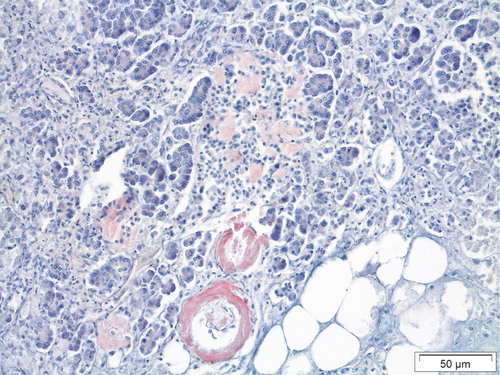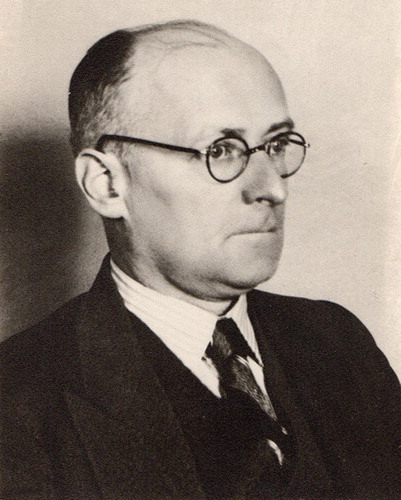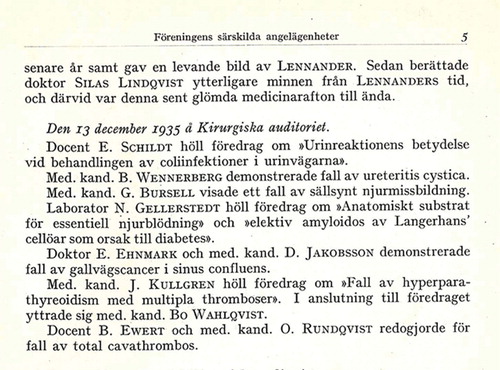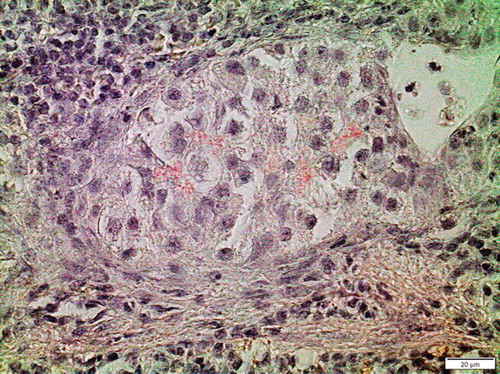Figures & data
Figure 3. Figure form Gellerstedt’s paper from 1938 showing islet amyloid in a patient with systemic amyloidosis. Although we do not know what type of systemic amyloidosis it is, AA amyloidosis was by far the most common form in Sweden at that time. Note the colour differences between the amyloids. The depicted section was stained with methyl violet.

Figure 4. A modern pancreatic section from a patient with AA amyloidosis due to rheumatoid arthritis and with islet amyloidosis of IAPP nature. A similar colour difference as in Figure 3 is seen in the two amyloid forms. Congo red.

Figure 5. Gellerstedt’s prophetic statements on p. 11 of his paper (1). In translation: ‘The problem “senile amyloidosis” contains many interesting questions, studies of which perhaps may open new ways in research. The most important is again serology. It is important to put more efforts than earlier into studies of the serological changes in the senium as well as immunobiological and allergic reactions in the healthy as well as sick organism, also in animal experiments. The studies must also widen into the psychiatric field; there are interesting problems regarding the development of senile and presenile psychoses due to antigen–antibody reactions and so on. — However, the pathological-anatomical research is not to be disregarded. The author tends to believe that a systematic and careful study of the different body tissues for presence of atypical amyloid deposits in old humans, perhaps also in animals, could discover additional, non-rare findings of similar nature’.




